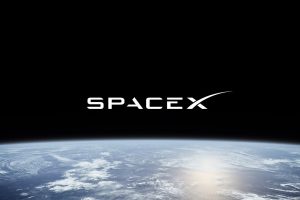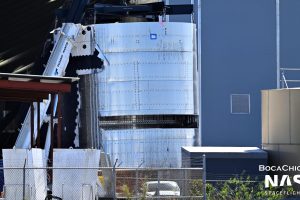SpaceX’s latest launch webcast offered exceptionally clear views of the company’s 88th successful Falcon booster landing minutes after the rocket helped the US military cross a major reusability milestone.
In November 2020, Falcon 9 booster B1062 lifted off for the first time, successfully supporting the launch of the US military’s fourth upgraded GPS III satellite (SV04). As usual, the rocket stuck the landing, opening the door for what could be the last major customer-side reuse milestone for SpaceX. A few months prior, the US military Space and Missile Systems Center (SMC) had announced contract modifications that would permit “national security” payloads to fly on flight-proven boosters for the first time ever.
On June 17th, outfitted with a new recoverable payload fairing and expendable second stage, Falcon 9 B1062 lifted off on its second mission for the US military and sent another GPS III satellite (SV05) on its way towards orbit without issue. Eight and a half minutes after launch, the booster safely landed on drone ship Just Read The Instructions (JRTI), potentially setting the stage for SpaceX to reuse the same booster again on a future ‘national security’ launch.
To some extent, the US military’s certification of flight-proven Falcon boosters for high-value “national security” launches effectively means that SpaceX’s reusability efforts have now been officially validated by every major American customer and institution. Logically beginning with satellites, SpaceX’s first booster reuse ever launched a commercial geostationary communications satellite for SES in March 2017. Three more commercial satellite operators joined the flight-proven fray later that same year, as did NASA with an uncrewed Cargo Dragon space station resupply mission.
Coming as a bit of a surprise, the next major validation of SpaceX reusability came when NASA gave the company permission to launch astronauts with flight-proven Falcon boosters and Dragon capsules almost immediately after Demo-2, SpaceX’s inaugural human spaceflight. Ten months after NASA opened the doors, SpaceX successfully launched four astronauts – riding in a flight-proven Crew Dragon capsule – to the International Space Station (ISS) on a flight-proven Falcon 9 booster.



Given just how aggressively NASA has prioritized safety in the Commercial Crew Program, the space agency’s willingness to simultaneously launch astronauts – for the first time ever – on a flight-proven booster and spacecraft was the most resounding validation of the technology and system SpaceX could have ever received. That it came before the US Air/Space Force certified flight-proven SpaceX rockets to launch satellites simply served to emphasize how the US military is led more by dogma than data – not particularly surprising after decades and trillions of dollars of procurement boondoggles.
Regardless, more than four years, 91 consecutively successful launches, and 66 successful booster reuses after Falcon 9’s first operational reuse, the US military has finally cleared SpaceX to launch ‘national security’ satellites on flight-proven boosters. Wholly unsurprisingly, Falcon 9 aced its first operational military reuse, stuck the landing, and successfully delivered a fourth GPS III satellite to orbit. SpaceX has one more GPS III contract on the books and could potentially launch Falcon 9 B1062 a third time in support of that mission sometime next year. In the meantime, several more Lockheed Martin-built GPS III satellites are approaching completion, suggesting that the US military will award several more GPS III launch contracts in the near future.





